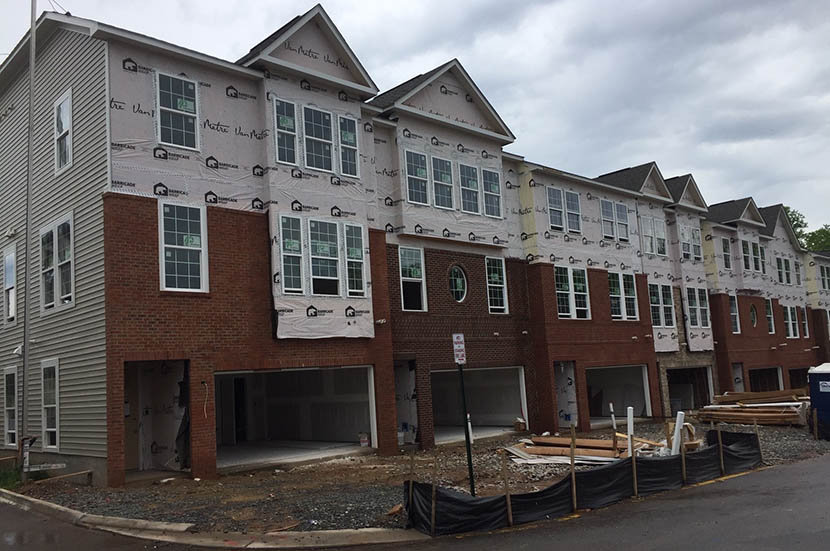
May Housing Starts Post Modest Increase

HUD and the Census Bureau yesterday reported May housing starts improved by 4.3 percent, stopping a two-month freefall in the wake of the coronavirus pandemic.
The report said privately owned housing starts in May came in at a seasonally adjusted annual rate of 974,000, 4.3 percent higher than the revised April estimate of 934,000, but still 23.2 percent lower than a year ago (1.268 million). Single-family housing starts in May rose to 675,000; 0.1 percent higher than April’s revised 674,000. The May rate for units in buildings with five units or more rose to 291,000, up by nearly 17 percent from April’s revised 249,000 but down by 33.1 percent from a year ago.
Regionally, results were mixed, no more so than in the West, where starts jumped by a whopping 69.8 percent in May, seasonally annually adjusted, to 309,000 units from 182,000 units in April. Still, starts in the West fell by 1.2 percent from a year ago. In the largest region, the South, starts were off by 16 percent to 479,000 units in May from 570,000 units in April and fell by 32.3 percent from a year ago.
In the Midwest, starts fell by 1.5 percent in May to 133,000 units, seasonally annually adjusted, from 135,000 units in April and fell by nearly 16 percent from a year ago. In the Northeast, starts rose by nearly 13 percent to 53,000 units in May from 47,000 units in April but fell by nearly 40 percent from a year ago.
In the previous two months, housing starts fell by 22 percent and 30 percent, respectively, on a month over month basis.
“Housing construction inched up in May, but single-family starts remained almost 18 percent below last year’s pace, and multifamily starts were 33 percent lower,” said Mike Fratantoni, Chief Economist with the Mortgage Bankers Association. “At only 9 percent below last year, new permits are recovering more quickly and are an indication that the pace of construction should continue to improve in the months ahead.”
Fratantoni said MBA data on purchase applications “clearly show that housing demand is brisk, supported by record-low mortgage rates. However, unless additional housing inventory is available, this increase in demand cannot be matched by the expected robust increase in home sales. The only bright side of low supply levels are that they should continue to support current home values.”
Doug Duncan, Chief Economist with Fannie Mae, Washington, D.C., said housing starts came in “somewhat weaker than expected, but we believe it suggests that the bottom in home construction has passed.”
“Continued strong home purchase demand, as evidenced by increasing purchase mortgage applications combined with a tight inventory of homes for sale–likely due in part to home sellers’ COVID-19 concerns–should bolster near-term support for new single-family home construction,” Duncan said.
“Many had hoped that starts would be quicker to get back on track, as construction was mostly deemed an ‘essential’ activity and over half of the 422,200 residential construction jobs that were lost in April were added back in May,” said Mark Vitner, Senior Economist with Wells Fargo Securities, Charlotte, N.C. “There were some modest upward revisions to April’s awful outcome, but total starts are still off about 40% from January’s peak of 1.6 million.”
Still, Vitner noted, “the housing market appears to be holding up fairly well, and while we expect declines for the year in housing starts, residential construction should soon begin to pick back up again. New single-family sales held up much better than expected during the tumultuous month of April, and builder confidence has rapidly improved.
The report said privately owned housing units authorized by building permits in May rose to a seasonally adjusted annual rate of 1.222 million, 14.4 percent higher than April’s revised 1.066 million but 8.8 percent lower than a year ago (1.338 million). Single-family authorizations in May rose to 745,000; 11.9 percent higher than April’s revised 666,000. Authorizations of units in buildings with five units or more rose to 434,000 in May, up 18.3 percent from April’s revised 367,000 but down by 8.4 percent from a year ago.
HUD/Census said privately owned housing completions in May fell to a seasonally adjusted annual rate of 1.115 million, 7.3 percent lower than April’s revised 1.203 million and 9.3 percent lower than a year ago. Single-family housing completions in May fell to 791,000; 9.8 percent lower than April’s revised 877,000. The May rate for units in buildings with five units or more fell to 310,000, down by 2.2 percent from April’s revised 317,000.
